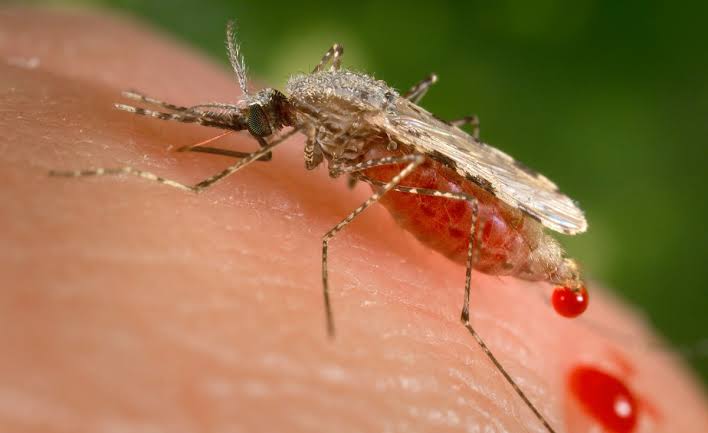How Smartphones Are Being Used to Test for Malaria in Uganda
The University of Glasgow has been working with the Vector Control Division of the Uganda Ministry of Health – collaborating for several years on new ways to achieve vital recommendations from the World Health Organisation (WHO) outlined in a 2018 report on controlling malaria, which highlighted a need for fast and reliable testing that’s available even in the most remote areas.
Together, the two institutions have reported that some advances have been made towards delivering new devices which empower people with basic medical knowledge to administer malaria tests in the field. Their new smartphone-based diagnostics tests analyse and record data in a secure fashion.

Currently, the most common and accurate malaria tests search for the disease-causing parasite’s DNA in a person’s blood using what’s known as PCR – polymerase chain reaction testing, a process similar to that used to test for SARS-CoV-2, the virus that causes COVID-19.
Read also:Nguvu Health Provides on-demand Therapy Sessions to Africans
These tests require trained staff to take samples of people’s blood and then process it, and the tests must be done in laboratory conditions. However, more portable field tests are available.
They include lateral-flow tests which detect molecules from the parasite circulating in the blood, but some studies suggest these tests may only be accurate 75% of the time. The challenge, therefore, is to diagnose malaria with the sensitivity and accuracy of the PCR test, using the same simple equipment as the lateral flow test.
To do this, Jonathan Cooper and Julien Rebound of the University of Glasgow say they have developed a unique “origami” diagnostic system. It is based on folded sheets of waxed paper and the process is known as loop-mediated isothermal amplification or LAMP. This is similar to the established PCR test method, but easier to use.
Read also:Cameroon’s VYZYO Partners CAMPOST to Launch Digital Payment Services
“We use a common household printer to print patterns made from water-resistant wax onto paper. We melt the wax onto paper on a hotplate,” the researchers say. “Then, a blood sample taken from a patient via finger prick is placed into a channel defined in the wax pattern. The fluids and regents move in the paper by capillary action (in much the same way as absorbent tissue soaks up a spillage).
Eventually, this sample is transferred to three small chambers in a cartridge that integrates with the origami paper, they say. The cartridge is then placed into a purpose-built 3D printed cassette, powered using a simple power source (such as a mobile phone). It then carries out the LAMP reaction to test the sample’s DNA for evidence of the disease-causing parasite.
“Our origami system was field-tested at two primary schools in the Mayuge and Apac districts in Uganda. It correctly diagnosed malaria in 98% of the samples,” write the researchers.
“Our finding was confirmed by testing the samples again using the PCR process. The results suggested that paper-based LAMP diagnostics could deliver better, faster, more effective malaria tests in communities.”
While the new “Origami” system may solve the initial challenge, the WHO must now overcome a second challenge: creating a digital system that local and national authorities could use to monitor infections.
“We believe that Africa’s widespread adoption of smartphones, even in the most remote areas, could be key to empowering people to administer tests and securely share their results with health authorities,” Cooper and Rebound say. Working with the Uganda Ministry of Health, the researchers set out to develop a diagnostic app to pair with their diagnostic system
Read also:Kenyan Insurtech Startup, AiCare, Secures Funding From Nairobi Business Angels Network
“We used blockchain technology to secure patient confidentiality. The technology ensures that only authorised healthcare workers with the correct “key” can access the results. And it traces all access and decisions securely,” they say.
The smartphone is paired with a 3D-printed stand containing a simple heating element. The phone provides the battery power to run the DNA based assay. The app controls the temperature of the origami test.
“We also use the mobile phone to analyse the data and tell the healthcare professional what species of malaria the person is infected with. This ensures that the right drugs are correctly administered. Health workers don’t need to be highly skilled.”
Results are securely stored on a blockchain-based ledger to ensure their privacy. They are wirelessly shared only with trusted organisations such as regional or national health authorities.
“In collaboration with local educational bodies, we partnered again with a Ugandan primary school to evaluate our new system in the real world. We tested blood samples from children aged between 5 and 12. Again, the results were 98% accurate.”
Ultimately, the hope of the researchers is to give people in areas affected by malaria, no matter how remote, access to effective, easy-to-administer, secure tests. In doing so, they can also provide local health officials with new data to help better manage outbreaks as and when they occur. In the future, the systems we’ve developed could help tackle a range of other infectious diseases.
Kelechi Deca

Kelechi Deca has over two decades of media experience, he has traveled to over 77 countries reporting on multilateral development institutions, international business, trade, travels, culture, and diplomacy. He is also a petrol head with in-depth knowledge of automobiles and the auto industry

